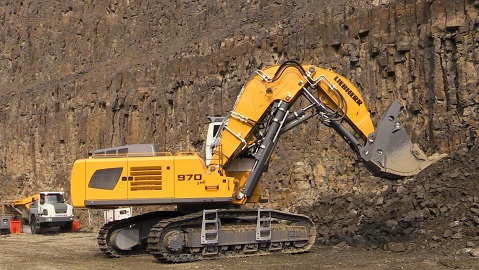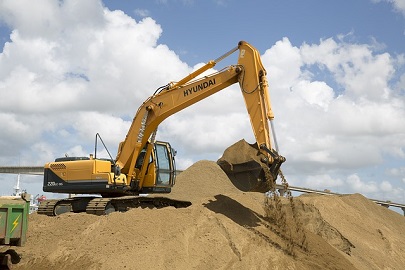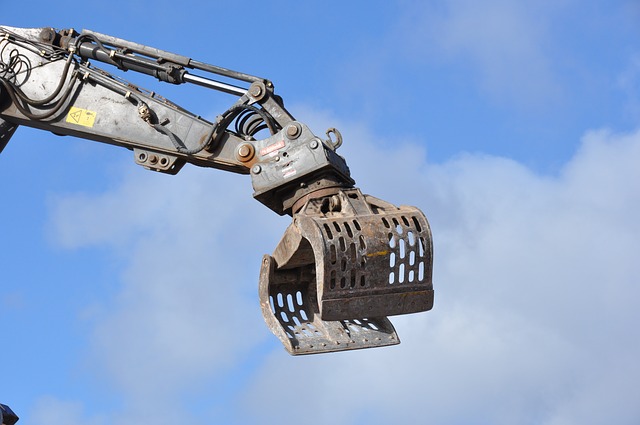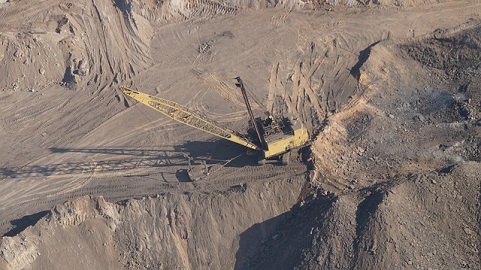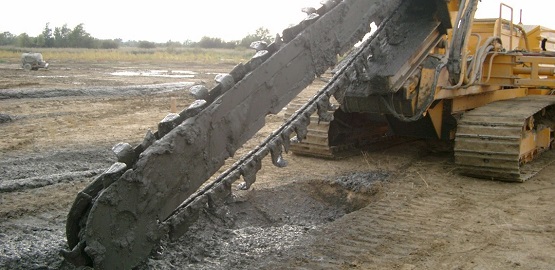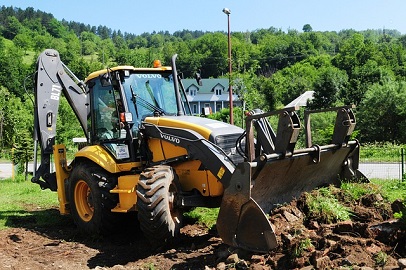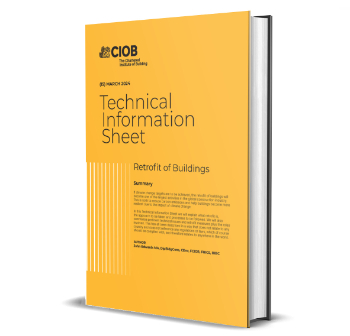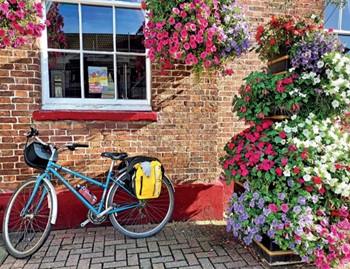Excavating plant
Contents |
[edit] Introduction
Excavators are a common item of plant that can be used on construction sites to excavate and load most types of soil. Before beginning excavation works, there must be a plan for the areas that require excavating as well as where the excess material will be stored.
Very broadly, types of excavating plant can be categorised as:
- Hydraulic (face shovel or backacter).
- Dragline.
- Trenching machine (or skimmer).
- Multi-purpose.
Generally, the choice of excavating plant will depend on:
- The quantity of material to be excavated.
- The type and condition of the soil.
- The weather conditions.
- The speed of excavation required.
- The depth of the excavation.
- The material disposal method (side cast or cart away).
[edit] Hydraulic excavators
These are tracked machines with a slewing capacity of 360-degrees, capable of adapting to a wide range of different requirements. The typical bucket size is 1 m3.
[edit] Face shovels
Face shovels are characterised by a boom and bucket arm that extends and swings upwards from the front. It can be used to excavate any kind of soil, including rock that has been loosened by blasting. It is usual for an additional haulage vehicle to be required for spoil removal, as well as a low loader transport lorry for travelling between sites. Face shovels are limited to an excavation depth of 300-400 mm below their own track or wheel level.
[edit] Backacter or back actor
A backacter (or back actor) is fitted with a boom and bucket arm or a dipper arm that excavates downwards. They are most suited to trench, foundation and basement excavations. The depth of the dig can be up to 6-7 m, although arm extensions can be added if further depths are required. In excavation operations where the bucket width is equal to the trench width, increased accuracy and high productivity rates can be achieved.
For more information, see back actor.
[edit] Hydraulic clamshell
Hydraulic clamshells are used in situations that are too difficult for a backacter, such as dredging and caisson sinking. They are suited to excavating very loose soils, as the bucket grabs and lifts rather than scoops and lifts.
[edit] Dragline
Draglines are fitted with a basic crane jib which uses a rope or chain to control a drag bucket which is swung out to the excavation position and hauled or dragged back towards the power unit. It is best suited to bulk excavation in loose or waterlogged soils below its own track level.
[edit] Trenching machine
Also known as a skimmer, a trenching machine is used for excavating long trenches, such as those necessary for pipelines. They will normally dig trenches 0.25-1.5 m wide and up to depths of 3 m, where a high degree of accuracy is required. The machine moves forwards when excavating with buckets either mounted on a wheel at the front, or on a chain which is carried by a jib.
[edit] Multi-purpose excavator
These are the most common ‘JCB digger’ machines, intended for small to medium-sized excavation works. They are fitted with loading/excavating front buckets with widths up to 2 m and a rear backacter bucket that has a 180-degree arc of operation. Both are hydraulically controlled by the operator/driver. Use of the backacter bucket requires that the machine is raised off its axles using rear-mounted hydraulic outriggers or jacks.
The machine is flexible in that it can be fitted, usually on the backacter dipper arm, with a variety of bucket widths and attachments such as bulldozer blades, scarifiers, grab buckets and post-hole auger borers.
[edit] Related articles on Designing Buildings Wiki
- Amphibious excavators.
- Building foundations.
- Compressed air plant.
- Concreting plant.
- Construction plant.
- Construction skip.
- Dredging.
- Earth-moving plant.
- Groundworks.
- Pumps and dewatering equipment.
- Ripping.
- Temporary works.
- Trenching equipment.
- Tunnelling.
[edit] External references
- ‘Introduction to Civil Engineering Construction’ (3rd ed.), HOLMES, R., The College of Estate Management, (1995)
- ‘Building Construction Handbook’ (6th ed.), CHUDLEY, R., GREENO, R., Butterworth-Heinemann, (2007)
Featured articles and news
ECA Industry Awards 2024 shortlist revealed
22 leading businesses from across the electrotechnical and engineering services sector.
Government unveils Skills England strategy
Skills England to transform opportunities and drive growth.
New Government Hub for York Given Planning Green Light
For up to 2,600 civil servants, due for completion by 2028.
Construction Skills Certification Scheme cards
July update on Professionally Qualified and Academically Qualified Person Cards.
BSRIA Briefing 2024, November 22
Sustainable Futures: Redefining Retrofit for Net Zero Living.
The CLC on driving competency in the retrofit sector
Previously published roadmap on skills for net zero.
The first labour government King's speech in fifteen years
Construction industry reactions, support and some concern.
CIOB Retrofit of Buildings Technical Information Sheet
What retrofit is, the approach to be taken and processes to be followed.
Adapting Historic Buildings for Energy and Carbon Efficiency
Historic England advice note 18, free download published.
10 retrofit projects revisited 10 years after completion.
Information orders, building liability orders and SPVs
Key BSA terms and how they impact special purpose vehicles.
Listed despite problems with its design.
Zen and the art of cycling exploration.
Design Council Homes Taskforce launched
To support government 1.5 million homes target within UK climate commitments.







